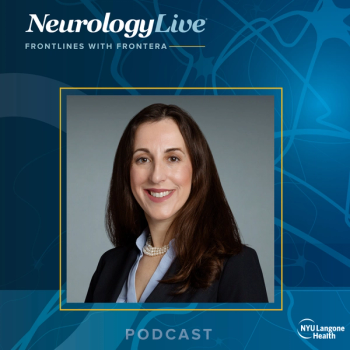
Fremanezumab Shows Potential as Effective Treatment for Migraine and Comorbid Major Depressive Disorders
Key Takeaways
- Fremanezumab significantly reduced monthly migraine days and depressive symptoms in patients with migraine and comorbid MDD compared to placebo.
- The trial demonstrated fremanezumab's potential as a single treatment option, reducing the need for polypharmacy and associated risks.
The UNITE trial reveals fremanezumab's effectiveness in treating migraine and comorbid depression, offering hope for patients with overlapping conditions.
Findings from the recently published UNITE trial (NCT04041284) showed that fremanezumab, an FDA-approved medication for migraine, is effective in alleviating migraine and comorbid major depressive disorder (MDD) in patients with both conditions. To the authors’ knowledge, this was the first placebo-controlled study to show significant improvement in both migraine and depression using a single treatment in those with overlapping conditions.1
UNITE was a 28-week, double-blind, placebo-controlled, parallel-group randomized clinical trial that comprised a 4-week baseline period, 12-week double-blind period, a 12-week open-label extension (OLE), and an end-of-treatment visit approximately 12 weeks after the final dose of fremanezumab. Eligible patients were adults (aged 17-80 years) with a diagnosis of episodic or chronic migraine, as well as a diagnosis of MDD, according to the DSM-5 criteria.
Led by
The safety of fremanezumab remained consistent as well throughout the trial. Overall, 40% (n = 70) of patients on the medication had an adverse event (AE) vs 27% (n = 48) of those on placebo. Most of the AEs observed during the double-blind period were mild or moderate in severity. Overall, more patients on fremanezumab experienced general disorders and administration site conditions (20 [11%] vs 8 [5%]), as well as infections and infestations (27 [15%] vs 17 [10%]).
Regarding the clinical implications of this study, Lipton et al wrote, "Although polypharmacy is an option for patients who do not respond to antidepressants, this comes at an extra financial cost, complicates management, and increases the risk of AEs and drug interactions. The results of this study suggest that fremanezumab may provide an effective and well-tolerated preventive treatment option for this patient population. It is important to note that further studies are required to evaluate the effectiveness of fremanezumab at alleviating depressive symptoms compared with standard preventive migraine treatments for patients with comorbid depression."
Despite the cohort entering with moderate to severe depression (HAM-D 17 scores: fremanezumab: 16.2 [SD, 6.3]; placebo: 16.2 [SD, 6.5]), both groups achieved clinically meaningful response in treating depressive symptoms. All told, mean change in HAM-D 17 at week 8 was –6.0 (SE, 0.55; 95% CI, –7.10 to –4.95) for fremanezumab and –4.6 (SE, 0.54; 95% CI, –5.66 to –3.55) for placebo. The least-square (LS) difference of –1.4 (SE, 0.61) points in HAM-D 17 was considered statistically significant (P = .02).
A significantly greater proportion of patients on fremanezumab achieved at least a 50% reduction in MMDs vs placebo during the 12-week double-blind period (33% vs 13%; P <.001). By week 12, response rates were 40% with fremanezumab and 25% with placebo, with sustained benefit from week 4 onward. Fremanezumab also led to a greater reduction in HIT-6 scores (–8.8 vs –5.2; LS mean difference: –3.6), reflecting a clinically meaningful improvement.
Exploratory end points, which included data across the double-blind and OLE phases of the study, continued to highlight fremanezumab’s effect in this patient population. At week 4, mean HAM-D 17 score reductions were –3.7 with fremanezumab vs –3.2 with placebo; by week 12, reductions were –6.7 vs –5.4, respectively. Baseline PHQ-9 scores were similar (15.8 vs 15.2), with both groups showing clinically meaningful improvements. At week 24 of the OLE, monthly migraine days dropped by an average of –6.9, and HAM-D 17 scores decreased by –8.0 overall, with comparable reductions in both the fremanezumab-fremanezumab and placebo-fremanezumab groups.
The authors wrote the study had several strengths, including the fact that "Randomized clinical trials focusing on the treatment of migraine and a common comorbidity are rare. To the best of our knowledge, the UNITE trial was the first study to assess the effects of a migraine-specific preventive treatment in patients with migraine and comorbid major depressive disorder, and the first placebo-controlled study to demonstrate significant improvement in both migraine and major depressive disorder with a single pharmacological intervention."
Lipton et al continued, "the population enrolled in this study was highly complex, having had migraine and major depressive disorder for at least 1 year, with an average of 20.7 years since migraine diagnosis and moderate to severe depressive symptoms at baseline. Additionally, a high proportion of patients (64%) received concomitant antidepressant medication, making the sample representative of the real-world population of patients with migraine and psychiatric comorbidities."
REFERENCE
1. Lipton RB, Campos VR, Arie ZRB, et al. Fremanezumab for the Treatment of Patients With Migraine and Comorbid Major Depressive Disorder The UNITE Randomized Clinical Trial. JAMA Neurol. Published online May 5, 2025. doi:10.1001/jamaneurol.2025.0806
Newsletter
Keep your finger on the pulse of neurology—subscribe to NeurologyLive for expert interviews, new data, and breakthrough treatment updates.




















